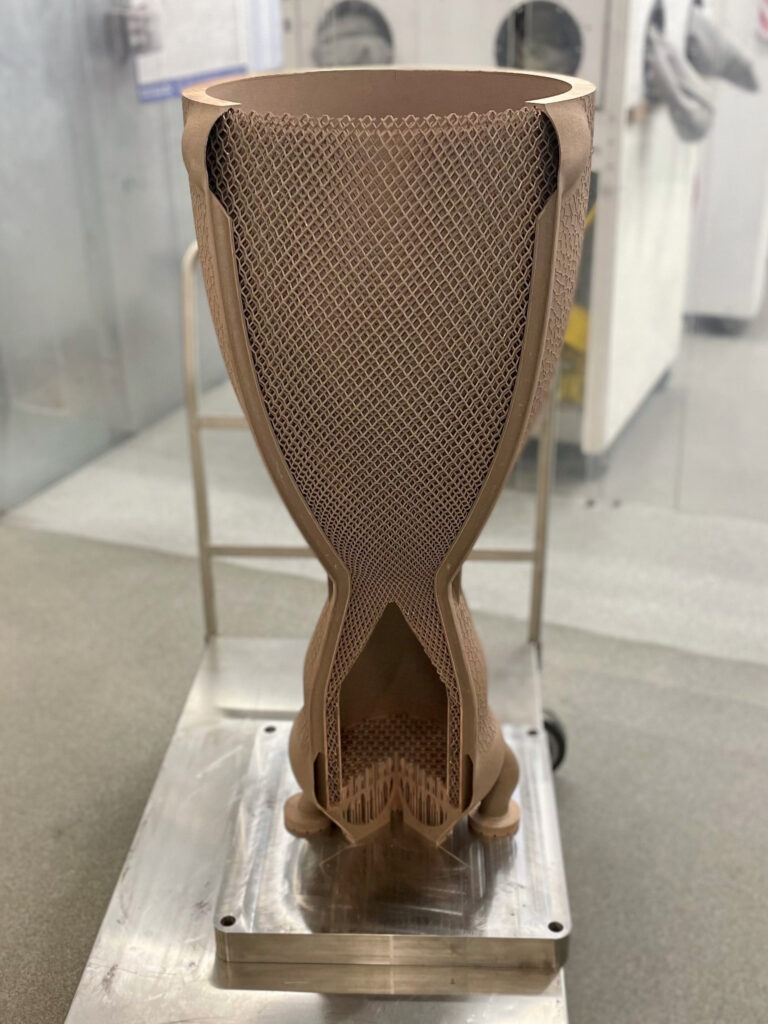
An aerospace component manufactured by Sintavia’s additive manufacturing process. (Photo: Business Wire)
Sintavia was awarded a contract by the U.S. Department of Defense for development of additively manufactured components.
HOLLYWOOD, Fla.—Aerospace component manufacturer Sintavia, LLC was awarded a contract by the U.S. Department of Defense for the development of additively manufactured hypersonic propulsion components, the company said in a release.
The contract is reported to be part of the Growing Additive Manufacturing Maturity for Airbreathing Hypersonics (GAMMA-H) project, contracted through the S²MARTS OTA, managed by the National Security Technology Accelerator (NSTXL),
The contract was awarded in part to Sintavia to develop and prove out the robust quality and operational processes needed to design and manufacture critical precision components for hypersonic flight. By validating these processes specifically with respect to hypersonic propulsion components, Sintavia’s efforts under GAMMA-H will be able to be used across the growing hypersonic industrial base. The contract is expected to run through 2025, the company said.
“The GAMMA-H award represents an important step forward in developing and formalizing standard additive manufacturing processes that can be used across the industry for hypersonic production,” said Brian R. Neff, Sintavia’s founder and CEO, in the release. “As the industry leader in this effort, Sintavia is uniquely positioned to work with the GAMMA-H project to successfully develop and validate these processes. We are grateful to the GAMMA-H team for their trust in Sintavia regarding this absolutely critical national security imperative.”
Announced in October 2023 with a budget of $106.7M, the GAMMA-H project is a joint effort between the Office of Secretary of Defense ManTech and the Naval Surface Warfare Center, Crane Division. In addition to the direct GAMMA-H award, Sintavia supports several other efforts also funded by the GAMMA-H project.
Sintavia describes itself as “the world’s first all-digital aerospace component manufacturer.” The company said it “uses generative design to simulate, additively manufacture, post-process, test, and certify a new generation of complex mechanical components for lead system integrators and platform OEMs” around the world.
